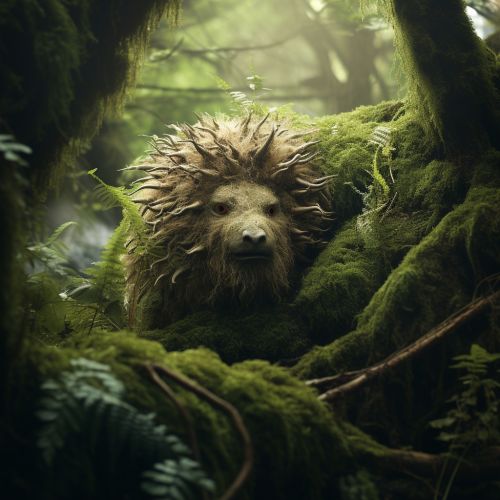Anti-Predator Adaptations
Introduction
Anti-predator adaptations are evolutionary traits and strategies developed by various species to deter predation. These adaptations can be physical, behavioral, or physiological, and they are essential for the survival of many species in the wild. This article will delve into the various types of anti-predator adaptations, their mechanisms, and examples in different species.
Physical Adaptations
Physical adaptations are one of the most common types of anti-predator strategies. These include morphological changes that aid in the defense against predators.
Camouflage
Camouflage is a common physical adaptation that allows an organism to blend in with its surroundings. This can make it difficult for predators to detect their prey, increasing the prey's chances of survival. Camouflage can take many forms, including coloration that matches the environment, disruptive patterns that break up the outline of the organism, and mimicry of other objects or organisms.


Mimicry
Mimicry is another form of physical adaptation where an organism resembles another species or object to deter predation. This can be in the form of Batesian mimicry, where a harmless species mimics the appearance of a harmful or poisonous species, or Mullerian mimicry, where two or more harmful species resemble each other, reinforcing the avoidance behavior in predators.
Armor and Spines
Some species have developed physical defenses such as armor and spines. For example, porcupines have sharp quills, and turtles have hard shells. These adaptations can deter predators by causing physical harm or by making the prey difficult to consume.
Behavioral Adaptations
Behavioral adaptations are changes in an organism's behavior that increase its chances of survival against predators.
Alarm Calls
Many species use alarm calls to warn others of a nearby predator. This can alert other members of the group to the presence of danger, allowing them to take defensive actions.
Mobbing Behavior
Mobbing behavior is a tactic used by many bird species, where a group of smaller birds will aggressively harass a larger predator to drive it away from their nesting area. This behavior can be risky for the individual birds, but it can be effective in protecting the group as a whole.
Playing Dead
Some species, like opossums, will play dead when threatened by a predator. This behavior can deter predators that prefer live prey.
Physiological Adaptations
Physiological adaptations are changes in an organism's body functions that aid in defense against predators.
Venom
Some species produce venom, a toxic substance that can harm or kill predators. This can be delivered through bites, stings, or other means.
Warning Coloration
Many venomous or poisonous species use warning coloration, or aposematism, to signal their danger to predators. This often involves bright, contrasting colors that are easily recognizable.
Conclusion
Anti-predator adaptations are diverse and complex, varying greatly among different species and environments. They play a crucial role in the survival of many species, influencing their behavior, physiology, and physical traits. Understanding these adaptations can provide valuable insights into the dynamics of predator-prey interactions and the evolutionary pressures that shape biodiversity.
